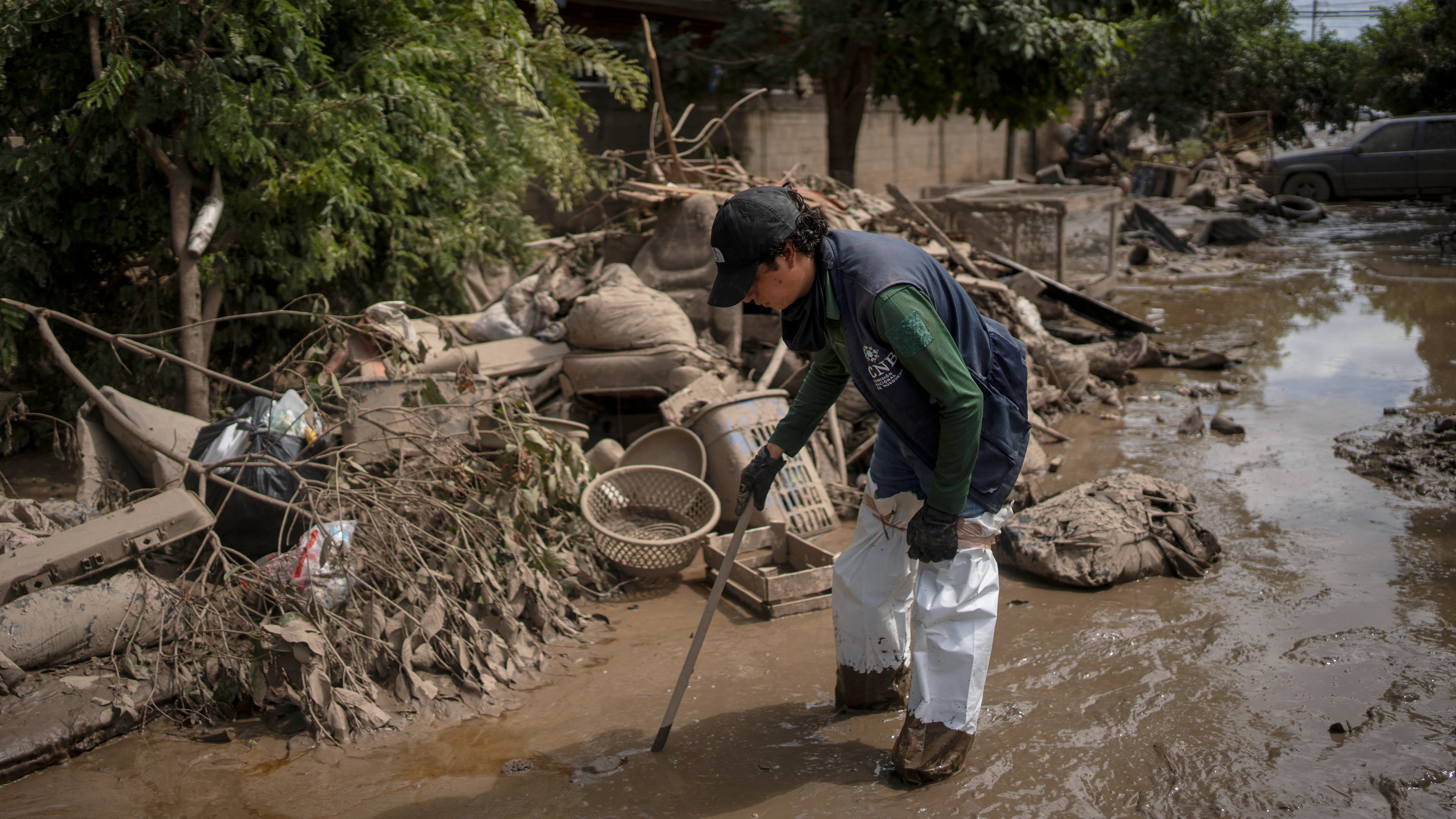A week after floods, swathes of central Mexico reel from devastation

POZA RICA, Mexico (AP) — The stench of decay spread for several miles around Poza Rica on Wednesday, one of the areas hardest hit by last week’s torrential rains that flooded central and eastern Mexico.
In the center of this oil-producing city near the Gulf of Mexico, a lingering cloud of dust hovered over the main avenue where soldiers worked nonstop. Farther east, near the Cazones River — which overflowed on Friday — several streets still lay under 3 feet (1 meter) of water and mud, topped by another 6 feet (2 meters) of piled-up trash, furniture, and debris.
“A week later, this looks horrible — worse. You can’t even cross the street,” lamented Ana Luz Saucedo, who fled with her children when the water came rushing in “like the sea.”
Now she fears infection because, in addition to the garbage and mud, there’s a corpse near her house that still hasn’t been collected, she said. “The dead body has already started to rot, and no one has come for him."
The toll of last week’s devastating rains, floods and landslides continues to become more clear as Mexico's government chugs along on rescue and recovery efforts.
As of Wednesday, the government recorded 66 deaths, while the number of missing people climbed to 75. Nearly 200 communities remain cut off — most of them in the central mountainous region of Hidalgo, where helicopters have struggled to reach them because of constant cloud cover.
Authorities have attributed the disaster to the convergence of several weather systems — two tropical systems along with a cold and a warm front — that hit just as a particularly intense rainy season was ending, leaving rivers saturated and hillsides weakened.
But residents like Saucedo believe the warnings came too late — at least in Poza Rica.
“Many people died because they didn’t give notice — really, they didn’t warn us,” she said. “They came only when the river was already overflowing … not before, so people could evacuate.”
Mexican President Claudia Sheinbaum said this week that alert systems for such events don’t work the same way as those used for hurricanes. However, she acknowledged that once the emergency phase ends, officials will need to review river maintenance and emergency protocols to determine “what worked, what we need to improve and whether there are better alert mechanisms.”
Emergency deployments of soldiers, marines and civilian teams continued across the hardest-hit states, alongside aid from hundreds of volunteers.
In Poza Rica, for example, a group of women who came from the port city of Veracruz distributed clothing and 1,000 tamales they had prepared for the flood victims.
Meanwhile, authorities are working to restore access on dozens of blocked roads and to bring back electricity, while also monitoring dams — many of which are now at maximum capacity.
____
Follow AP’s coverage of Latin America and the Caribbean at https://apnews.com/hub/latin-america
